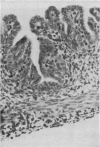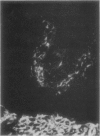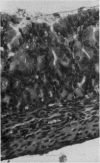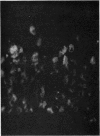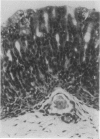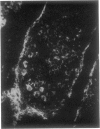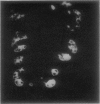Abstract
Six fetal and 10 neonatal rat or mouse stomachs and a 14-week human fetal stomach were examined for immunofluorescence reactivity with four sera containing parietal cell antibody (PCA) and four other sera containing smooth muscle antibody (SMA). In rat and mouse stomachs, parietal cells first reacted with PCA in 19-day fetal stomachs and with SMA in two-day neonatal rat stomachs or newly-born mouse stomachs. SMA reactivity with fetal rodent stomachs was restricted to the cytoplasm of smooth muscle, the apices of gastric mucosal cells, and the cytoplasm of fibroblasts surrounding invaginating gastric pits. In the 14-week human fetal stomach, parietal cells stained with PCA but not with SMA. Specificity of the staining reactions was established by the complete inhibition of PCA staining by serum absorption with a gastric microsomal fraction but not with actin. Conversely, the SMA staining was abolished by serum immunoabsorption with actin but not with microsomal fraction. These observations, indicating that the development of the parietal cell microsomal antigen precedes that of actin, may be used to distinguish between the staining of parietal cells by SMA and PCA.
Full text
PDF


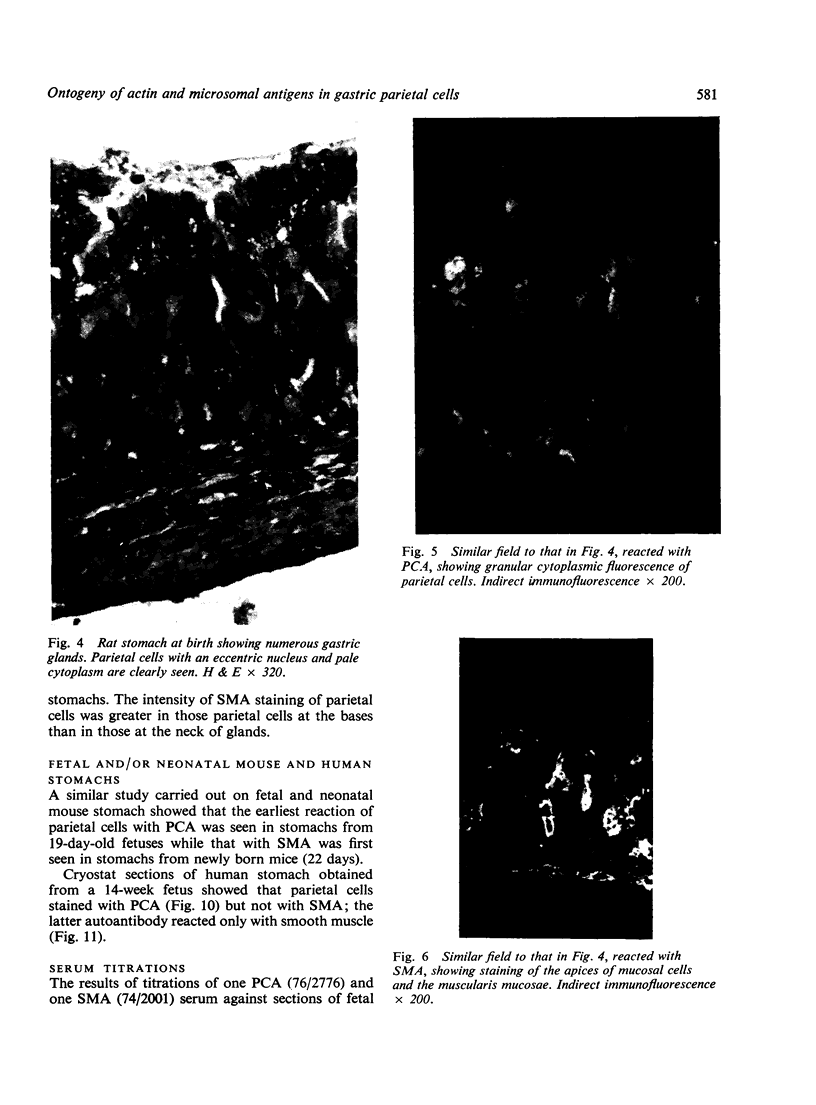
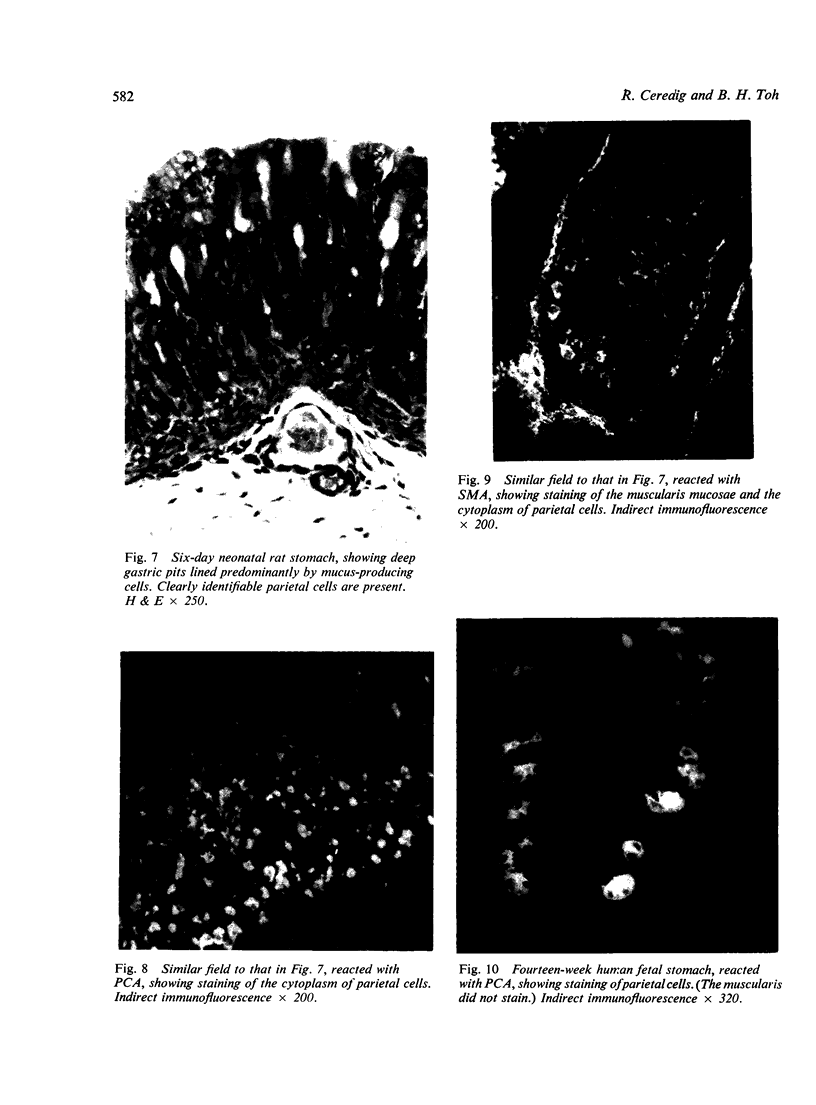
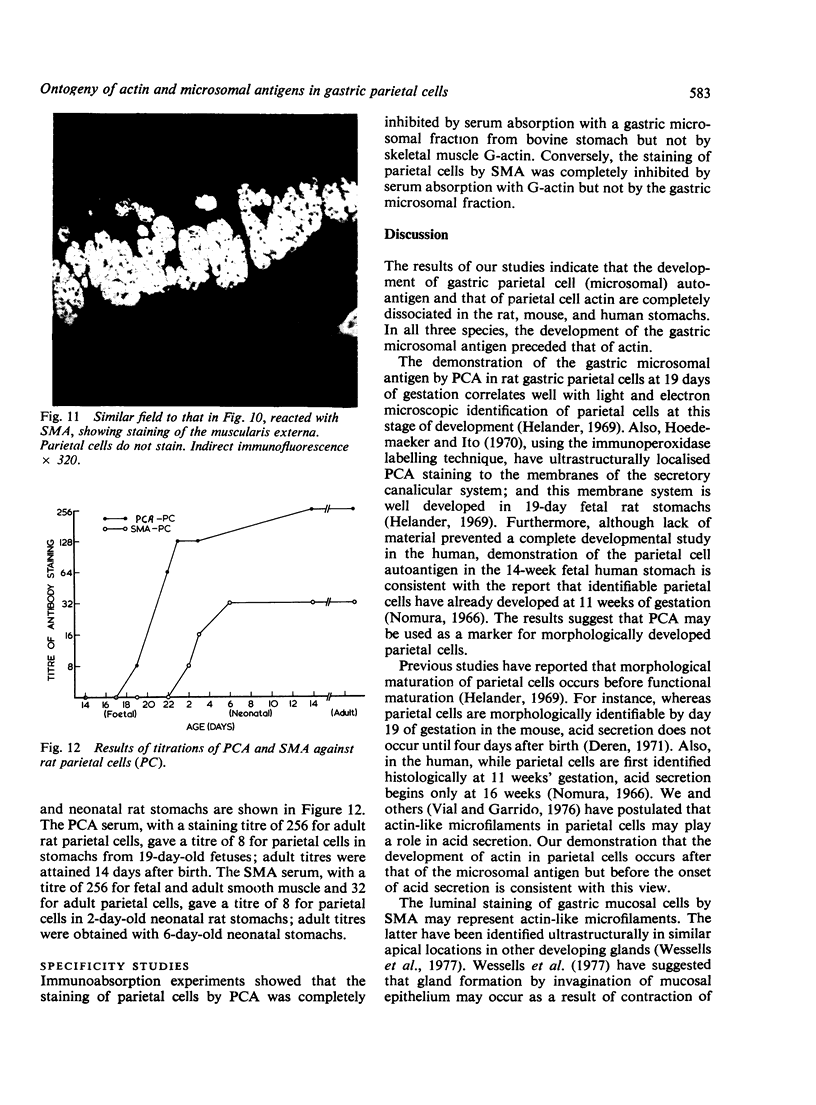
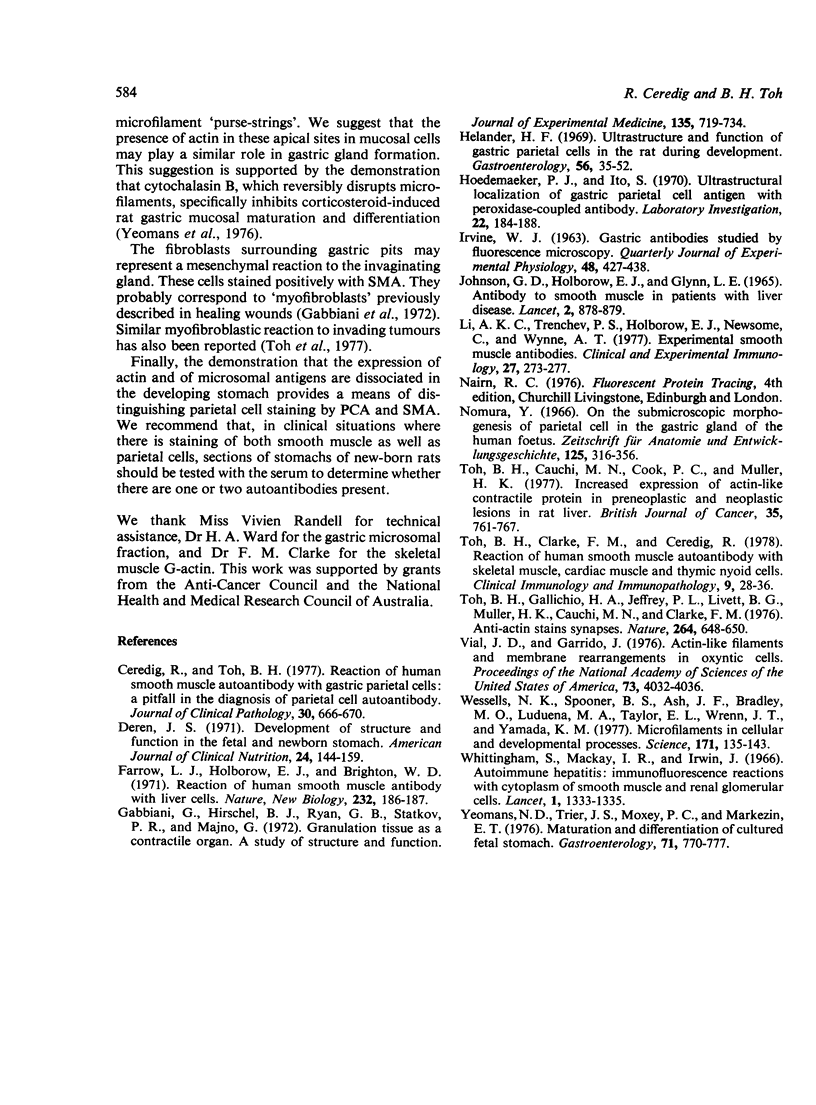
Images in this article
Selected References
These references are in PubMed. This may not be the complete list of references from this article.
- Ceredig R., Toh B. H. Reaction of human smooth muscle autoantibody with gastric parietal cells: a pitfall in the diagnosis of parietal cell autoantibody. J Clin Pathol. 1977 Jul;30(7):666–670. doi: 10.1136/jcp.30.7.666. [DOI] [PMC free article] [PubMed] [Google Scholar]
- Deren J. S. Development of structure and function in the fetal and newborn stomach. Am J Clin Nutr. 1971 Jan;24(1):144–159. doi: 10.1093/ajcn/24.1.144. [DOI] [PubMed] [Google Scholar]
- Farrow L. J., Holborow E. J., Brighton W. D. Reaction of human smooth muscle antibody with liver cells. Nat New Biol. 1971 Aug 11;232(2):186–187. doi: 10.1038/newbio232186a0. [DOI] [PubMed] [Google Scholar]
- Gabbiani G., Hirschel B. J., Ryan G. B., Statkov P. R., Majno G. Granulation tissue as a contractile organ. A study of structure and function. J Exp Med. 1972 Apr 1;135(4):719–734. doi: 10.1084/jem.135.4.719. [DOI] [PMC free article] [PubMed] [Google Scholar]
- Helander H. F. Ultrastructure and function of gastric parietal cells in the rat during development. Gastroenterology. 1969 Jan;56(1):35–52. [PubMed] [Google Scholar]
- Hoedemaeker P. J., Ito S. Ultrastructural localization of gastric parietal cell antigen with peroxidase-coupled antibody. Lab Invest. 1970 Feb;22(2):184–188. [PubMed] [Google Scholar]
- IRVINE W. J. GASTRIC ANTIBODIES STUDIED BY FLUORESCENCE MICROSCOPY. Q J Exp Physiol Cogn Med Sci. 1963 Oct;48:427–438. doi: 10.1113/expphysiol.1963.sp001685. [DOI] [PubMed] [Google Scholar]
- Johnson G. D., Holborow E. J., Glynn L. E. Antibody to smooth muscle in patients with liver disease. Lancet. 1965 Oct 30;2(7418):878–879. doi: 10.1016/s0140-6736(65)92505-5. [DOI] [PubMed] [Google Scholar]
- Li A. K., Trenchev P. S., Holborow E. J., Newsome C., Wynne A. T. Experimental smooth muscle antibodies. Clin Exp Immunol. 1977 Feb;27(2):273–277. [PMC free article] [PubMed] [Google Scholar]
- Toh B. H., Cauchi M. N., Cook P. C., Muller H. K. Increased expression of actin-like contractile protein in preneoplastic and neoplastic lesions in rat liver. Br J Cancer. 1977 Jun;35(6):761–767. doi: 10.1038/bjc.1977.117. [DOI] [PMC free article] [PubMed] [Google Scholar]
- Toh B. H., Clarke F. M., Ceredig R. Reaction of human smooth muscle autoantibody with skeletal muscle, cardiac muscle, and thymic myoid cells. Clin Immunol Immunopathol. 1978 Jan;9(1):28–36. doi: 10.1016/0090-1229(78)90117-4. [DOI] [PubMed] [Google Scholar]
- Toh B. H., Gallichio H. A., Jeffrey P. L., Livett B. G., Muller H. K., Cauchi M. N., Clarke F. M. Anti-actin stains synapses. Nature. 1976 Dec 16;264(5587):648–650. doi: 10.1038/264648a0. [DOI] [PubMed] [Google Scholar]
- Vial J. D., Garrido J. Actin-like filaments amd membrane rearrangement in oxyntic cells. Proc Natl Acad Sci U S A. 1976 Nov;73(11):4032–4036. doi: 10.1073/pnas.73.11.4032. [DOI] [PMC free article] [PubMed] [Google Scholar]
- Wessells N. K., Spooner B. S., Ash J. F., Bradley M. O., Luduena M. A., Taylor E. L., Wrenn J. T., Yamada K. Microfilaments in cellular and developmental processes. Science. 1971 Jan 15;171(3967):135–143. doi: 10.1126/science.171.3967.135. [DOI] [PubMed] [Google Scholar]
- Whittingham S., Mackay I. R., Irwin J. Autoimmune hepatitis. Immunofluorescence reactions with cytoplasm of smooth muscle and renal glomerular cells. Lancet. 1966 Jun 18;1(7451):1333–1335. doi: 10.1016/s0140-6736(66)92131-3. [DOI] [PubMed] [Google Scholar]
- Yeomans N. D., Trier J. S., Moxey P. C., Markezin E. T. Maturation and differentiation of cultured fetal stomach. Effects of corticosteroids, pentagastrin, and cytochalasin B. Gastroenterology. 1976 Nov;71(5):770–777. [PubMed] [Google Scholar]



